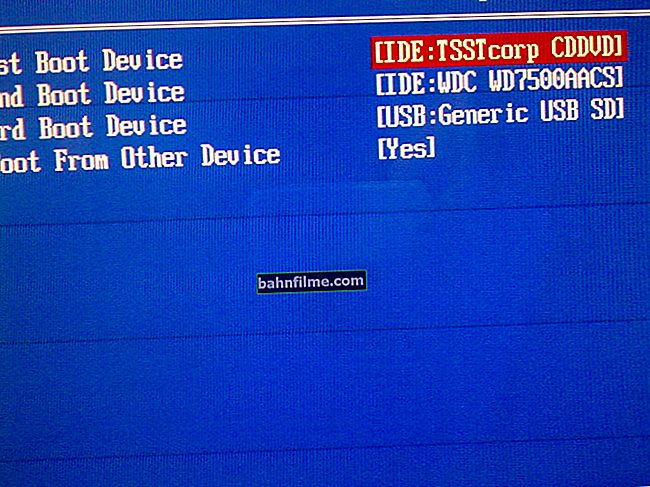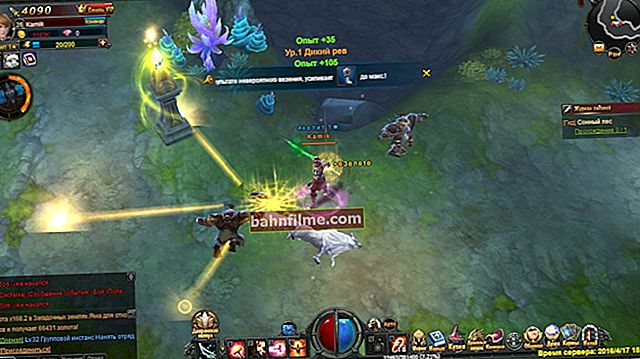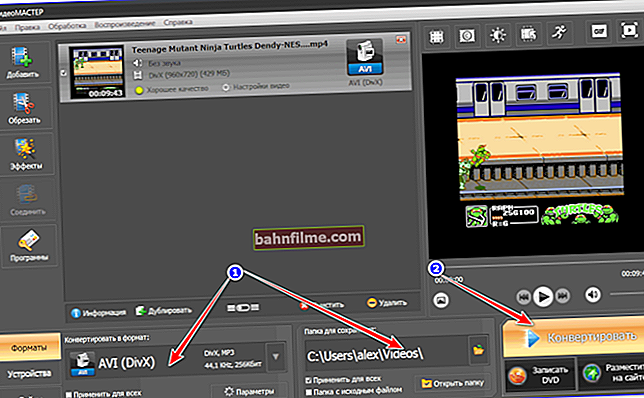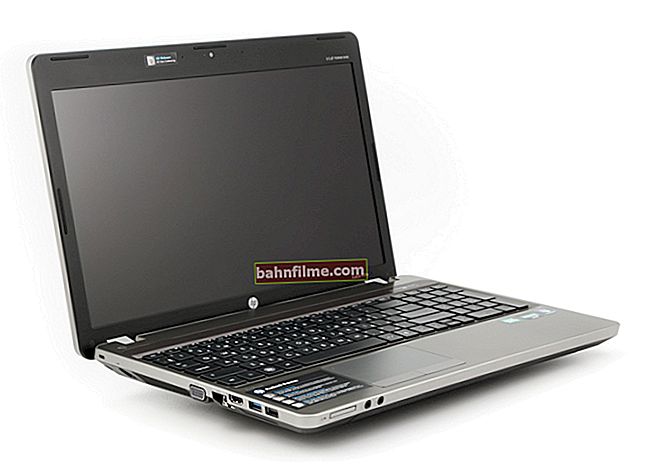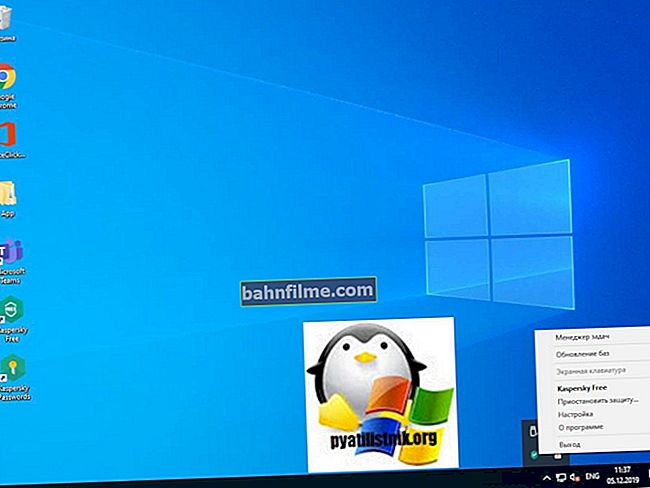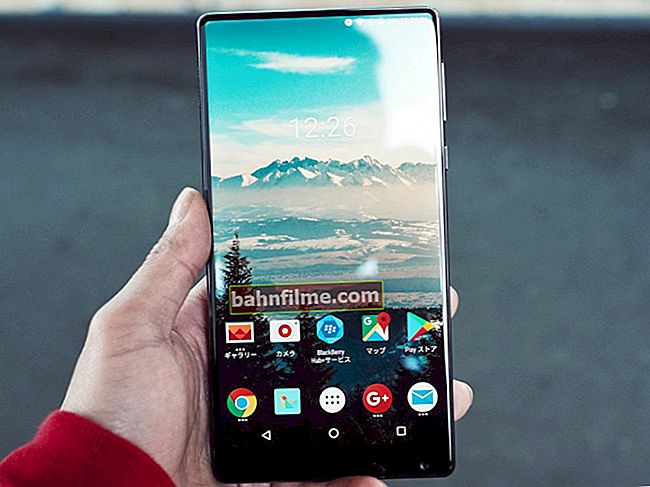 Good afternoon!
Good afternoon!
There is one interesting statistic: it is estimated that every third user is faced with a lack of hard disk space (HDD) after six months of using a new PC / laptop (standard configuration). True, it seems to me that the trend should still change lately - more and more information begins to be stored in cloud disks ...
Be that as it may, in this article I wanted to consider the most important points when choosing a new HDD. I think the article material will be useful to many inexperienced users.  .
.
So...
Addition! You may also find articles useful:
1) how to connect a second hard drive to a computer - //ocomp.info/kak-podklyuchit-vtoroy-hdd.html
2) how to connect 2 disks to a laptop - //ocomp.info/2-diska-v-noutbuke.html
*
⑹ moments when selecting a disk (HDD)
⑴
External or internal
Perhaps the first thing to start with is that hard drives can be like internal (installed inside the system unit, laptop), and external (usually plugged into a USB port).
The choice mainly depends on the goals. If you take a disk to transfer information from one PC to another, then it is much better to choose an external drive (by the way, it can be connected not only to a PC, but also to any device with a USB port).
If you need a disk for work, for example, to install another operating system on it, then the choice is with the internal disk (and also in cases where you are not going to transfer the disk).

Internal and external HDD
By the way, speaking about the choice of an external drive, I have a separate article on my blog, and I recommend it (link below).
Addition!

How to choose an external hard drive - //ocomp.info/kak-vyibrat-vneshniy-zhestkiy-disk.html
⑵
About disk space
It would seem that everything is quite simple with volume: the more, the better. But this is only on the one hand, and on the other there are a couple of points that I want to focus on!
1) The actual volume of the disc is less than indicated on its packaging!
This is the truth in the first instance! For example, the disc packaging indicates its volume of 1 TB (or 1000 GB) - in fact, the actual free space on it will be only 931 GB!
Why is this happening?
The fact is that hard drive manufacturers measure in decimal system, and the computer counts in binary (probably many have heard from computer science courses). So, 1 KB = 1024 bytes (that's in theory!), But from manufacturers: 1 KB = 1000 bytes. Because of this "non-multiplicity", it turns out that one volume is declared on the package, but in "My Computer", after connecting the disk to the PC, you see another ...
Important!
- If the disk package says 1 TB, its real volume is only 931.32 GB!
- To determine the real volume of the drive: multiply the declared size of the disk by the manufacturer by 0.931 (Important! The calculation method does not provide high mathematical accuracy, it is suitable for everyday needs).
- For example, let's take a 4 TB disk: 4 TB * 0.931 ≈ 3.724 TB (i.e. 4 TB is declared, in fact you can write ~ 3.7 TB).
- The second example is for a 2000 GB disk: 2000 GB * 0.931 ≈ 1862 GB.
2) Do not chase the latest innovations with the largest volume!
The question is, of course, debatable. And yet, based on statistics and experience, I will say that new items, as a rule, are much less reliable! Apparently the point here is that they are made according to "not run-in" technology, and many new ones. solutions have not yet been perfected.
It is much more important to pay attention to the reviews and ratings of a specific model range of one of the well-known manufacturers. At least, I personally think it is better to take 2 disks (of a proven model range) of 8 TB than one of 16 TB (of course, with the second option, you can save 20-30%, but for how long?).
⑶
About form factor (dimensions) and disk interfaces
The form factor means the size of the disk, it is measured in inches (not the amount of free memory, but its physical size! See the screenshot below). Two types of form factor are currently most popular:
- 2.5 inches (2.5 ") - used in laptops (although nothing prevents you from connecting it to a PC. In this case, you may need special sleds to fix it in the case of the system unit);
- 3.5 "(3.5") - used in classic PCs (you can't connect this to a laptop, except with the use of special adapters for connecting to a USB port). Much heavier and larger than 2.5 "drives.

Comparison of dimensions of 2.5 "and 3.5" drives
An important point!
Please note that discs can also be of different thicknesses! This is important if you are buying a laptop drive (a thicker drive may simply not fit into the bay).
For example, 9.5 mm is the classic thickness of a 2.5 "laptop disk (but 7 mm thick disks are often found, for example, in thin ultrabooks).
Interfaces
The most popular interface today is SATA (you can still find IDE on old PCs, the difference between them is shown in the photo below). External hard drives usually come with USB 3.1 (or USB Type-C, which is gaining popularity lately).

SATA III and IDE - as an example for a clear comparison
Generally, SATA is divided into three types:
- SATA I - speed up to 1.5 Gbps;
- SATA II - speed up to 3 Gbps;
- SATA III - speed up to 6 Gbps.
SATA, SATA II, SATA III are interchangeable. This means that you can connect a SATA III drive to a motherboard with SATA II support (although the drive will work at SATA II speed).
Addition!
By the way, to find out the current operating mode of a SATA hard drive, you can use the CrystalDiskInfo utility. After starting, you will need to select a disk (if you have several of them) and look at the "Transfer Mode" line (see example below).
SATA / 600 -> SATA III
SATA / 300 -> SATA II
SATA / 150 -> SATA

Transfer mode (on the screen SATA III) / CrystalDiskInfo
⑷
About disk read / write speed
There is another important characteristic that many novice users practically do not pay attention to. It's about read / write speed.
In general, recently in those. characteristics began to indicate this parameter. Typically, either specific values for writing and reading are specified, or an average parameter (called baud rate, as in the example below). Those. abstract SATA III say little about the real speed of writing a file to disk, but this parameter gives an approximate estimate of the speed (however, keep in mind that up to 164 MB / s is implied, and 164 is not always guaranteed!) .

Max. baud rate
In general, in this regard, pay attention also to the size cache disk and spindle speed (they greatly affect the data transfer rate). A few words about this below ...
Cache (buffer size)
Cache memory (or buffer size) is intermediate memory required by the disk to increase the speed of work when accessing data. The disk places the most frequently requested data into the cache. As a result, when the system requests something, some of the information is returned from the cache (and some is read from the platters), which significantly increases the speed and responsiveness of the disk.
Of course, the larger the cache size, the better. In the most common hard drive models today, the cache size ranges from 16 MB to 256 MB. As a rule, disks with a large cache size are more expensive.

Screen of characteristics of a random HDD
Spindle speed
To make it clear what we are talking about, I will briefly outline the work of the HDD: the drive inside has several disk platters that are installed on a spindle. Thanks to its rotation, the head reads and writes information to the disk platter. The higher the rotation speed, the higher the data exchange rate with the disk (and the more noise and heat it becomes!).

HDD
For reference! The speed of rotation is measured in rpm. (or generally accepted rpm).
The most common discs are now spinning at 5400, 5900, 7200 and 10,000 revolutions per minute (rpm).

Spindle speed (screen as an example)
According to many experts, the best option is 7200 rpm discs. When installing a disk in 10000 rpm - it is recommended to install additional. cooling (because they can often overheat).
By the way, if you take a disc exclusively for storing files (music, movies, etc.), then discs with 5400 rpm would be a good option (they do not heat up, and they make much less noise). In this regard, one of the leaders (in my opinion) are WD Green drives.

WD Green (2TB). As an example
⑸
Noise during operation
More than half of users don't even think about it when buying a disc! Usually, epiphany comes at night, when it becomes quiet around and you begin to hear noise (slight crackling) from the disk (all the more upsetting when all other hardware in the PC is practically silent) ...
In general, if you look closely at those. characteristics before buying - you can see such a parameter as "Noise level during operation" (Noise is measured in such a quantity as dB).

Noise level during operation (screen of technical characteristics of one of the HDDs from the DNS website)
So, in order to understand in general whether the value is large, say, a noise of 20 dB, I give a table below.

Table with an approximate estimate of noise in dB
If you need a very quiet drive, aim for less than 15 dB (but these models are few and far between and expensive).
Important!
Another type of disks, SSD, can be called completely silent. There are no mechanical parts in them, and therefore, they work a priori without noise. But they have their drawbacks: still lower volume (for the same price), limited number of write / rewrite cycles.
A more optimal variant, in my opinion, is about 20-25 dB (relatively quiet. However, see the reviews for a particular model, since some discs cannot withstand this value, and sometimes "crackle" under heavy load).
Discs with more than 30 dB noise for people who love silence, I would not recommend at all ...
To help!
If you already have a disk that is noisy, I recommend that you familiarize yourself with this note (using fine tuning you can make the disk quieter): //ocomp.info/pochemu-shumit-i-treshhit-hdd.html
⑹
About manufacturers
There are dozens of hard drive manufacturers: WD, Toshiba, Seagate, Hitachi, etc. The question about manufacturers is so controversial that I don't even know if it was worth raising it at all?
But nevertheless, since this is a common question, based on my work experience, I will make a short remark:
- Hitachi - disks of this brand are generally one of the most reliable, however, their price tags are much higher than those of other manufacturers;
- WD - In my opinion, they provide some balance between quality / price. Their truth is there are several lines of Red, Blue, Green, Black (Blue and Red are some of the best options in terms of reliability. When choosing the Black option, it is advisable to install additional cooling);
- Seagate is a decent Barracuda line. But in general, lately, in terms of quality, they began to lose much to WD. They have one serious advantage - the price (one of the lowest on the market). So, if you take the disk exclusively under the "file-trash" - it will be very useful.
- I will not mention the rest of the brands, because some of them have already sunk into oblivion, while others are not indicative (since there were not so many such disks in my use).
And yes, remember that no matter what brand the piece of iron is (and how much it costs), they can all fail (no one canceled the factory marriage either). Back up important data from time to time. Alternatively, you can set up automatic copying of documents to the cloud drive ...
P S
By the way! After connecting the new disk to the computer (laptop), most likely Windows will not see it. The fact is that new disks are not formatted (and the Explorer does not always see such drives). Therefore, first it will need to be formatted using a special. utilities. More details about this in one of my previous articles (link below).
What to do if the hard drive is not displayed on my computer - //ocomp.info/zhestkiy-disk-ne-otobrazhaetsya.html
*
That's all for now.
Additions on the topic are welcome ...
All the best!

